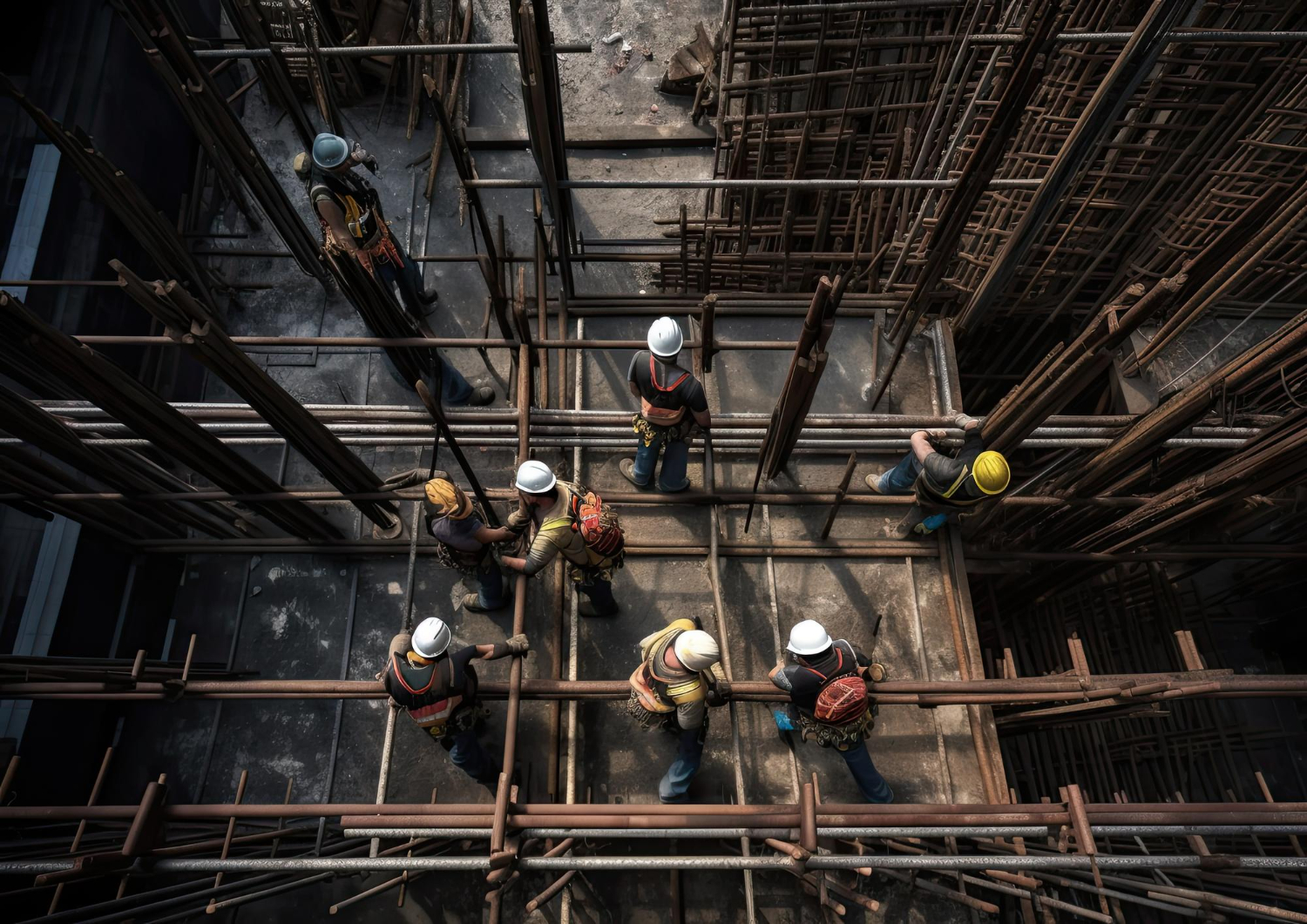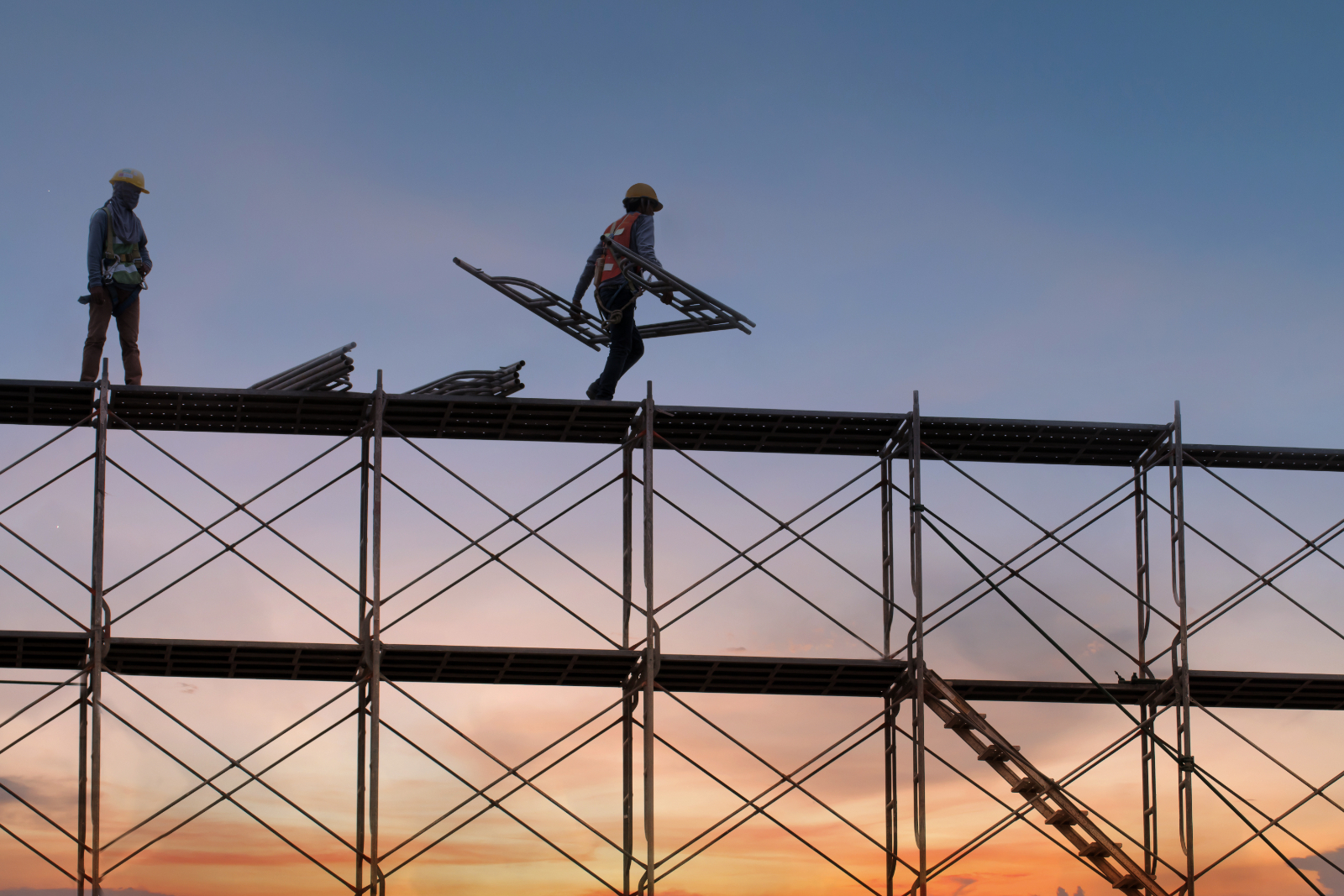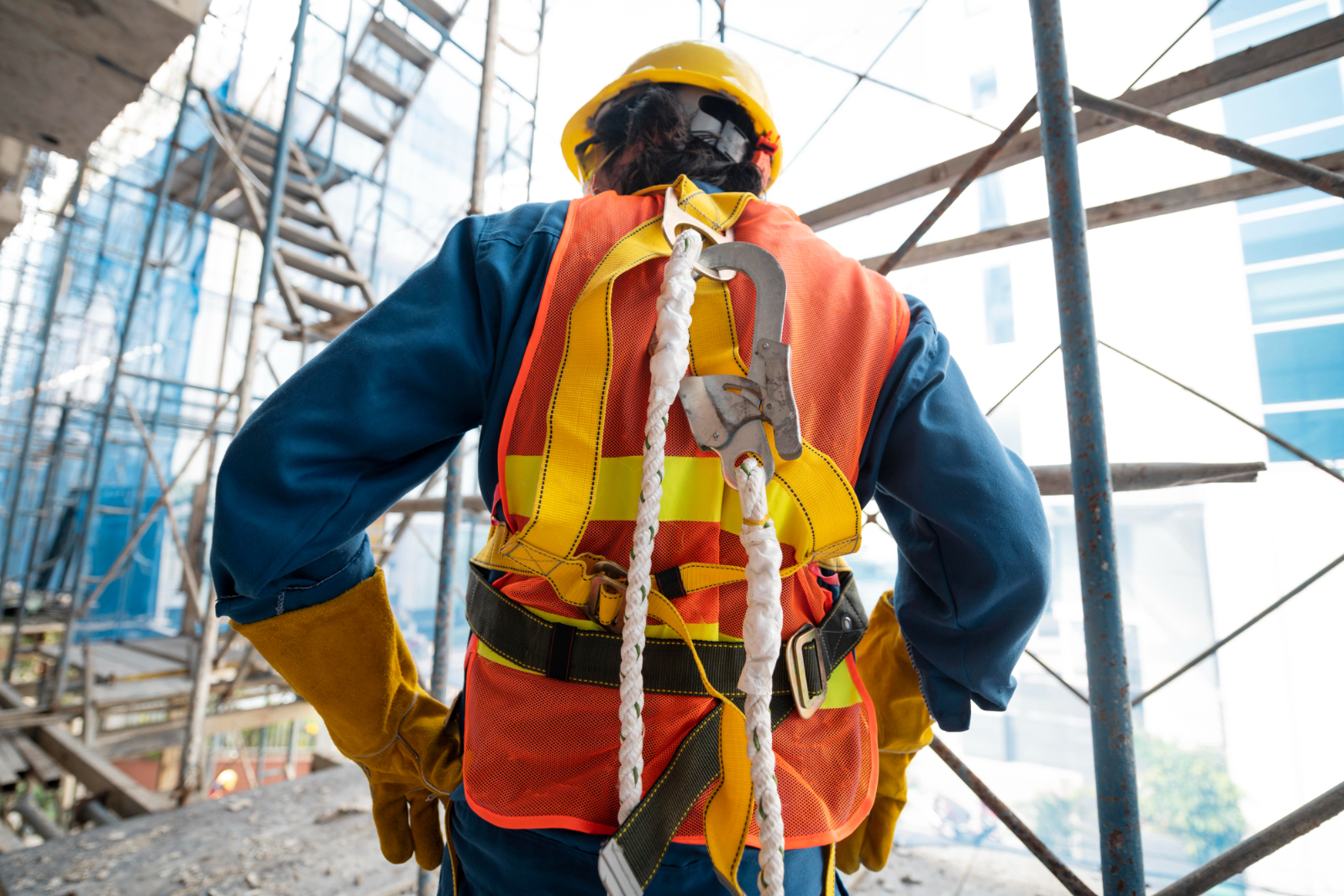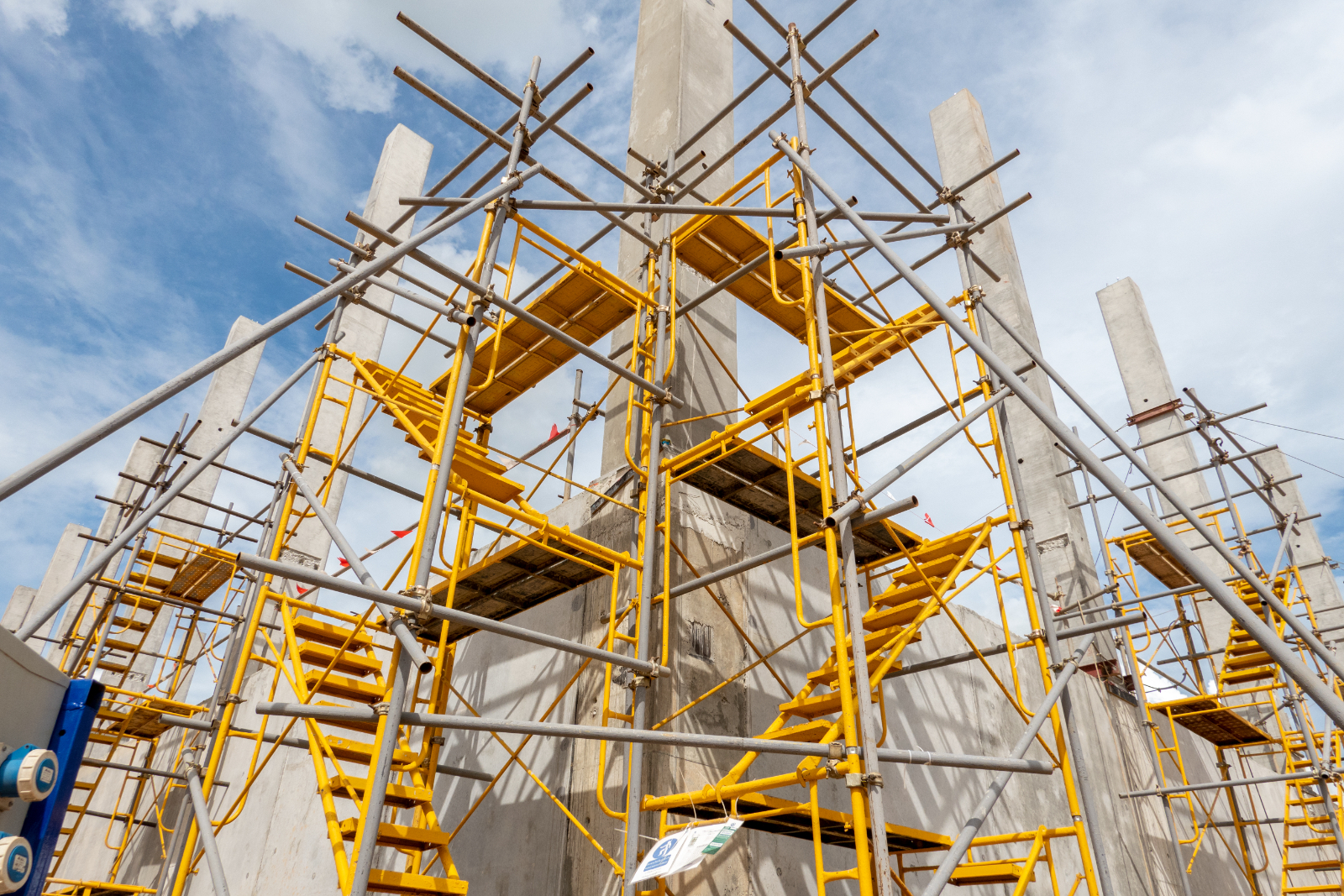This article asks: what are the main scaffold hazards? Explore our guide on the main risks associated with scaffolding. Learn about potential dangers like falls, instability, and more. Arm yourself with knowledge to mitigate risks, ensure worker safety, and create a secure environment.
Northampton Scaffolders offer bespoke scaffolding hire throughout Northampton, Daventry, Wellingborough and Northamptonshire. Your comprehensive resource for identifying and addressing scaffold hazards effectively.
Scaffolding Hazards To Look Out For
Working with scaffolding is naturally hazardous, meaning those working in the sector must watch out for dangers and avoid them as best they can. Many of the hazards of scaffolding are potentially lethal, therefore, scaffolding providers and workers must implement adequate safety precautions before work is started.
Thankfully, these safety precautions have improved dramatically in recent years. So much so that incidents and injuries caused by scaffolding are currently lower than ever before. This proves that by taking appropriate steps to keep everyone safe, you can mitigate the inherent hazards of scaffolding.
However, while scaffolding incidents are low, zero would be better. Therefore, any employers and employees working with scaffolding should hold health and safety as a top priority. Ensuring you remain up-to-date with the latest safety regulations and practices is the best way to protect yourself and others.

Major Scaffolding Hazards To Consider
Structurally-sound scaffolding systems allow operators to work safely at height. This is an integral part of many construction projects. But, again, there are inherent risks involved. Anything from slips, falling objects and scaffolding frame collapses all pose a threat to operators.
Awareness of these potential hazards helps you and others to avoid them. Knowing what to look out for can also help you take appropriate steps to mitigate any safety risks. Here we've listed some of the most common hazards involved when working with scaffolding.
Untrained Employees
Lack of training is a serious risk when it comes to working on scaffolding. There are approved ways to climb and work on scaffolding, so if any of your employees don't know what these are, they are at an increased risk of injury.
Debris, Tools, and Materials
Moving debris, tools and materials around is a natural part of all construction projects. This includes those that involve scaffolding. However, leaving any of these things lying around poses a serious trip hazard, which is only made worse when working at height.
Lack of Fall Prevention
While you can take every precaution to keep your scaffolding clean and tidy, there's always the risk that someone might fall at some point. Therefore, it's prudent to have guard rails fitted to your scaffolding at heights of 6 feet and above.
Scaffolding Damage
Scaffolding materials can take damage over time due to natural wear and tear through use. This damage can compromise the integrity of the frame. Collapses, cracked work platforms and rusted fastenings all pose significant risks.
Poor Scaffolding Assembly
Building your scaffolding according to the manufacturer's instructions is the best way to minimise the risk of injury. Loose planks or improvised construction can lead to serious accidents. You also need to take the ground and weather conditions into account.
Additionally, think about overhead obstacles, such as power lines. There are regulations stating how close your scaffolding can be to these obstacles for the safety of your employees. For example, if your scaffolding will be too close to any power lines, you must turn the electrical supply off.
Electrical Wires
Since most scaffolding is constructed from metal components, electrical wires pose a significant threat of electrocution to anyone working on it. You'll need to bear any electrical wiring in mind when constructing and working on your scaffolding.

Electrical Wires

Falling From Height
Falling from Scaffolds
Working with scaffolding means working at height, which brings with it the natural risk of falling. There are any number of reasons why someone might fall from scaffolding. Whether because of slippery substances, materials left lying around or any other reason, the risks are significant.
Ensuring your employees wear appropriate footwear can help mitigate these risks. Installing guardrails and clearing any debris away can also help. You should also ensure your employees have adequate training regarding how to climb scaffolding safely.
Again, you need to bear the weather conditions in mind. Rain and snow are obvious hazards that could lead to slips and falls. But so is strong winds, which are perhaps the greatest threat to anyone working with scaffolding.
Struck by Falling Objects
Another inherent risk of working at height is falling objects. Both those working at lower levels of the scaffolding and those working beneath and around it are at risk from this particular hazard. Tools, materials and debris can all be dropped, meaning hard hats are the bare minimum.
Electrocution
Aside from wiring and power lines, there are other electrical hazards involved with scaffolding. Power tools, welding equipment and other pieces of machinery can all pose an electrocution risk. Therefore, alongside being trained to climb and work on scaffolding, employers must ensure their employees are trained to operate these tools properly.
Scaffolding Collapses
Building your scaffolding to any other plan than the manufacturer's could lead to significant disasters, such as collapses. Different types of scaffolding adhere to different regulations, meaning different building requirements.
For example, suspended scaffolding lowered from above must have strong ropes to hold them and be secured to a permanent structure. Additionally, you must nominate a fully-trained "competent person" to oversee the construction of your scaffolding and to supervise while people work on it.
Importance of Scaffolding Safety
You can now see how many risks there are when working with scaffolding. Add to this the fact that the vast majority of construction work takes place on scaffolding, and you can easily see why health and safety is so important. This goes for site managers as well as those actually working on the scaffolding structures.
While safety standards have improved in recent years, there are still several thousand scaffolding accidents every year. But, by implementing property safety precautions, you can ensure that everyone on your site is as safe as possible.
Three of the most common accidents that contribute to these yearly averages are falls, falling materials and collapses. This makes proper building and training even more crucial for safe scaffolding work. As an employer, it is your responsibility to ensure your workers are fully trained for the work they do.
This training can either be on-the-job or in a dedicated professional setting. Both scaffolding safety and building regulations must be understood by everyone working on your site. Knowing what hazards are involved and where they can crop up gives your employees the best chance of avoiding them.

Scaffolding Safety Measures
Now that we've covered the various hazards involved with scaffolding and the responsibilities of those working on it, now we'll go through a few basic safety measures you can take to guarantee everyone's safety. Of course, this isn't a substitute for professional training, but we hope this will give you an idea of what you'll need to start with.
You can use these safety measures to safeguard yourself or other people working on scaffolding. You'll find most of these safety measures mentioned in HSE (Health and Safety Executive) regulations as the best ways to protect employees.
Fall Protection
Personal fall arrest systems.
Guardrails, mid-rails and top-rails for suspended and supported scaffolding closing of all open sides.
Personal Protective Equipment (PPE) including non-slip footwear and hard hats.
Not working when the scaffolding is covered in snow or ice or when weather conditions are particularly strong, including during storms or high wind conditions.
Falling Objects Protection
Personal Protective Equipment (PPE), such as hard hats.
Toe-boards and screens to prevent materials or tools from sliding off the end of work platforms.
Using guardrail systems with small openings to catch any falling objects that slop from the scaffolding.
Debris nets to catch falling rubble or platforms and canopies to prevent falling objects from reaching the ground.
Keeping all tools, equipment and materials away from the edges of working platforms.
Electrocution Protection
Adhere to HSE regulations for safe distances between your scaffolding and any electrical wiring or overhead power lines.
Performing welding or other electrical work on different types of scaffolding, potentially those that are insulated from electricity.
Personal Protective Equipment, such as rubber gloves.
Not working in bad weather, such as electrical storms and thunderstorms.
Safeguards Against Scaffolds Collapsing
Adhere to HSE safety standards for building and using different types of scaffolding.
Adhere to HSE safety standards for dismantling different types of scaffolding.
Ensure your scaffolding was designed by a qualified professional.
Ensure your scaffolding is built and inspected by a fully-trained competent person.
Worker Training
As we've mentioned multiple times throughout this article, ensuring your employees have the right training is vital for scaffolding safety. Ensure that anyone working on or near your scaffolding receives appropriate operator and health and safety training.
This training must be appropriate for the type of scaffolding you use. This includes how to build, inspect and dismantle the scaffolding safely. Aside from this, general health and safety training is a necessity for anyone working on a construction site, but especially for those working with scaffolding.
At Northampton Scaffolders, we offer a broad spectrum of scaffolding services for our customers in Northampton to hire. Our family-run business is fully qualified and has all the experience to deliver and install bespoke scaffolding and roofing covers. We complete scaffolding solutions for residential and commercial building projects.






